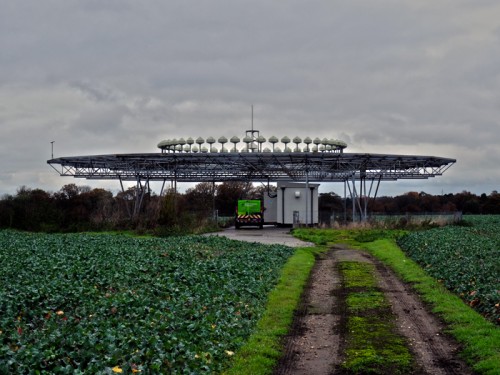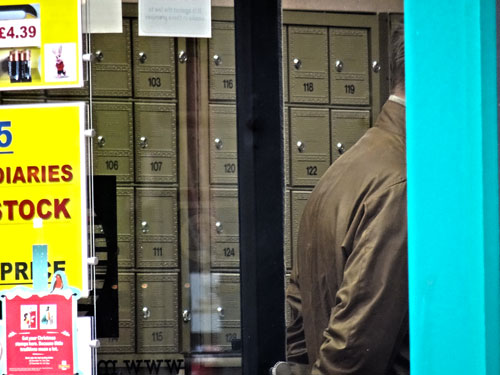Walk Two: Up in the Air

In the old Surrey village of Ockham, on the edge of the woods, you hear planes all the time. Helicopters too, ferrying the rich from Battersea out to Farnborough where the private jets are parked, but mostly the bigger planes. You hear them particularly here not because of the airports – although there are plenty in the area – but because of this. A scaffolding structure in a beetroot field, throbbing in the electromagnetic spectrum.
This is a VOR – a VHF omnidirectional radio – one of thousands around the world which form the waypoints in the global air highways. VORs broadcast two signals: a constant identifier in all directions, and a second signal which varies with every degree from North, allowing aircraft to determine the bearing to each known waypoint.
The field is quiet. High above Ockham, a constant stream of planes bound for Heathrow zero in, turn and circle, unseen in the low cloud. In the airband radio, just above the FM frequency, air traffic control chatters, and the VOR itself pulsates. But what is visible is the mud track, the green leaves, this quiet machine. We live in such a tiny scrap of the electromagnetic spectrum, a muffled room in a vast mansion.
In other rooms, other voices. In a service store in Surbiton, ten miles away, a mailbox. Two forms of ID, a dead drop for documents. Documents about the air. The second walk of the Nor.
